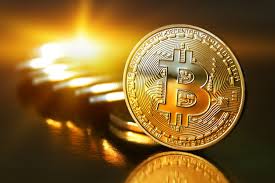Here’s Another Reason Why Bitcoin Could Soon Hit $6,000

It took less than a month for bitcoin investors to shake off China’s cryptocurrency crack down and Wall Street naysayers. On Friday, the price of bitcoin jumped within striking distance of $ 6,000 as optimism surrounding the cryptocurrency reignited thanks in part to traders using the Japanese yen.
That comes after the price of bitcoin shot as low as about $ 3,000 in mid-September, after Chinese authorities shuttered local cryptocurrency exchanges, while J.P. Morgan CEO Jamie Dimon dubbed bitcoin a “fraud.”
But it was neither the U.S. nor China, which have dominated the cryptocurrency markets since its inception, that apparently led to the price of bitcoin to come back up. Until recently, China has represented the majority of bitcoin trading since about late 2013. In 2016 alone, the Chinese yuan represented 96% of all trading with bitcoin, according to data from CryptoCompare, helping the price more than double that year. In fact, trading in China has been so heavy that since 2010, the vast majority of trades has still largely been dominated by the yuan.
But since Chinese investors began leaving major bitcoin exchanges for over-the-counter markets, its been the Japanese yen that’s begun taking over the role that the yuan once held. Over the past month, bitcoin trading using the Chinese yuan slid to 5% of total trades, according to data from CryptoCompare. Traders using the Japanese yen meanwhile have become 51% of the market, with $ 30.3 billion changing hands over the past month based on bitcoin’s current price. The U.S. dollar meanwhile represented a lesser 31% of trades.
The reason for Japan’s surge? The country’s government “has been extremely accommodating towards cryptocurrencies and bitcoin in particular,” said Fran Strajnar, CEO of Brave New Coin. Bitcoin’s liquidity is “quickly move from Chinese yuan to Japanese yen and Korean won, simply because of friendlier legislation, better clarity and better infrastructure and access coming out of Japan and Korea.”
In Japan, the government has been proactive in regards to addressing bitcoin. The country passed a law in April recognizing bitcoin as a legal payment method, with its Financial Services Agency issuing operating licenses to its bitcoin exchanges earlier this year. Trading in Japan has also been an attractive choice as the country’s exchanges operate on a zero-fee trading system.
It’s an interesting shift in the dynamics of bitcoin. In the short history of the cryptocurrency, the price of bitcoin has been dominated by investors using either the yuan, or the U.S. dollar. In 2011 for instance, the U.S. was the main player. A flurry of Chinese investors flocked in thereafter. In the latter half of 2015 especially, bitcoin trading activity from China began to pick up as the yuan devalued, pushing investors toward bitcoin as a way to move assets outside the country.
Notably, while Korean investors are beginning to make up a larger part of the overall market, they are still a relatively small section at about 7% of total trades in the last month.
Now, says Strajnar, it’s “all eyes on Japan and Korea as they continue to pave the regulatory way and in turn dominate crypto liquidity.”
But in the near term at least, aside from legal developments related to cryptocurrency in the U.S., China, Japan, and South Korea, investors also have technological developments to look out for. And there are two major ones around the corner: one planned hard fork on Oct.25, and another expected Nov.18. A hard fork happens when a segment of cryptocurrency users decide they don’t update the blockchain’s underlying software, which effectively creates one new currency. As a result of the fork, bitcoin owners would receive an equal amount of the new coin.
So why are these hard forks potential reason to be buying into bitcoin? Well, says Charles Hayter, co-founder of CryptoCompare, look to the recent August fork of bitcoin and Bitcoin Cash. Bitcoin users disagreed on how to speed up and cheapen cryptocurrency transactions at the time, leading to the split. While some users worried that Bitcoin Cash’s existence would divert users to the new coin and undercut bitcoin’s legitimacy, it proved to be an unneeded worry. The price of bitcoin continued to surge upward. And to top it all off, bitcoin owners also received a equal amount of Bitcoin Cash following the fork. That made some users quite a bit wealthier.
“In bitcoin, one plus one seemed to equal three,” Hayter said.
That’s not to say bitcoin users are guaranteed a good outcome after the hard forks. The concerns around the split fragmenting support for bitcoin still exist today—but having a major global economy signal acceptance of the cryptocurrency certainly helps keep the outlook rosier.
This is part of Fortune’s new initiative, The Ledger, a trusted news source at the intersection of tech and finance. For more on The Ledger, click here.

